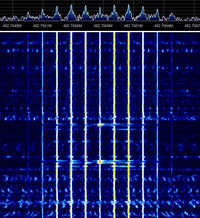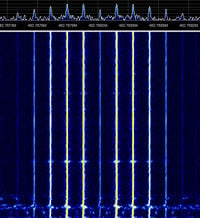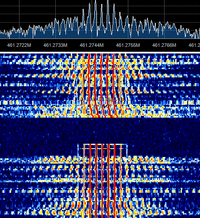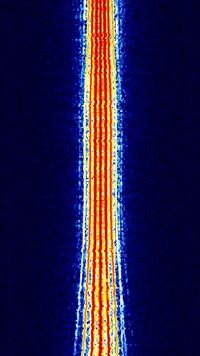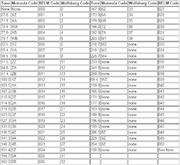Continuous Tone-Coded Squelch System (CTCSS)
From Signal Identification Wiki
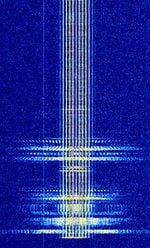 | |
|---|---|
| Frequencies | 30 MHz,800 MHz |
| Frequency Range | 30 MHz - 800 MHz |
| Mode | NFM |
| Modulation | CW |
| ACF | — |
| Emission Designator | — |
| Bandwidth | 5 kHz,12.5 kHz,30 kHz |
| Location | Worldwide |
| Short Description | CTCSS, also known as Private Line and Channel Guard, is a low continuous tone transmitted on NFM voice transmissions that is used to squelch and manage transmissions on a given frequency. |
| I/Q Raw Recording | Download file |
| Audio Sample | |
Continuous Tone-Coded Squelch System (CTCSS) is a low continuous tone transmitted on NFMNarrowband Frequency Modulation voice transmissions that is used to squelch and manage transmissions on a given frequency. This is also known as Private Line® (PL) by Motorola, Channel Guard® (CG) by General Electric and generically as tone squelch. The CTCSS system sounds like a low hum to listeners.
CTCSS is used in many analog FMFrequency Modulation public safety radios. They have a characteristic look on the waterfall, as continuous lines emanating around the center frequency carrier.
Mode Samples
| 151.4 HzHertz (Hz), unit of frequency, defined as one cycle per second (1 Hz). CTCSS | 173.8 HzHertz (Hz), unit of frequency, defined as one cycle per second (1 Hz). CTCSS | 186.2 HzHertz (Hz), unit of frequency, defined as one cycle per second (1 Hz). CTCSS |
|---|---|---|
| CTCSS Full Range |
|---|
Decoding Software
Video Examples
Additional Links
- RadioReference.com CTCSS Info
- ETSI Technical Specification: CTCSS
- Decoding CTCSS
- arrg.us CTCSS info
- Wikipedia CTCSS
- shoc Database: CTCSS
- WAVECOM Database: CTCSS
- Connect Systems Incorporated Programming Manual with CTCSS
- Tone Signaling Charts
